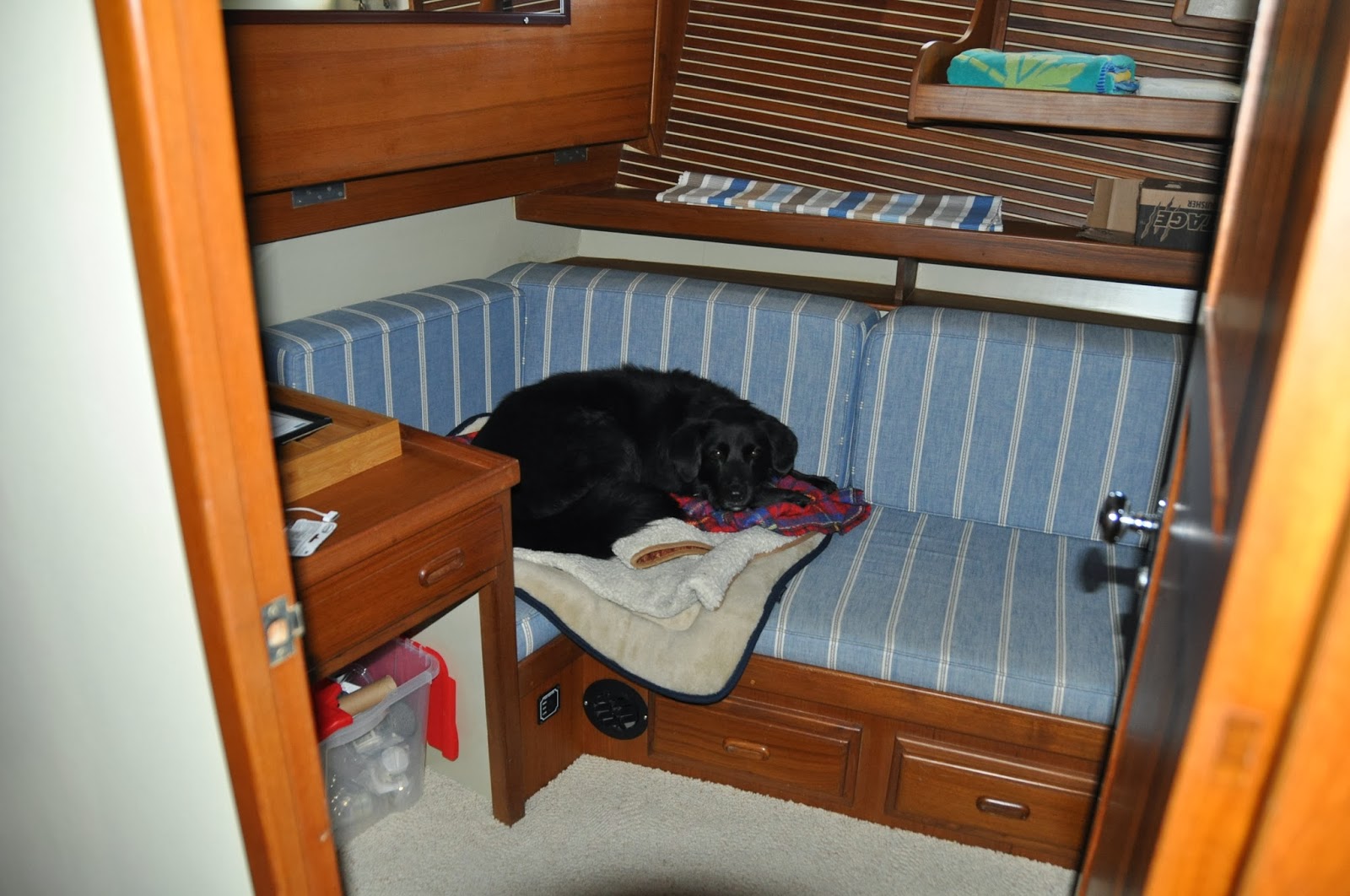After
bringing Phoenix Hunter home to Steveston BC, we went away to visit Jessica and
the grand children in Calgary and then Pam’s sister Sandra and brother-in-law
Shane in Calgary and finally Pam’s parents Ray and Pauline, sister Sharon and
nephew Carter in Cranbrook. On our
return, I had arranged with Murray to haul out the vessel and put her on the
hard next to Murray’s shop. As I
mentioned in an earlier post the surveyor had identified a conspicuous crack on
the faring around the post where the rudder shaft passes through the hull. The
cause or extent of the damage would be unknown until we could pull the
rudder. The shipyard would not block the
vessel at a height so we could remove the rudder, so we had to lift the vessel to
remove the rudder, shaft and bronze bushing/bearings. This revealed that the FRP rudder shaft tube
had been shattered inside. The rudder skeg/shoe
must have been hit with a considerable force for this damage to have occurred!
Murray’s
approach was to dismantle the stuffing box and grind off the faring and the
fiberglass tube that passes through the hull.
KK42’s have a cored hull, but fortunately, the hull is not cored but
solid at this location. We managed to
locate a source for fiberglass pipe that with the required ID to accommodate the
bronze bearing for the rudder shaft. I
was happy to acquire a one foot section for $25 even though it was a 2 hour
drive to and from the other size of Surrey to get it. Evidently this pipe is
used in the oil services and pulp mill industries. Murray used a hole saw to cut a wider hole to
accommodate the tube, as the tube was a wider OD than the original pipe. We borrowed a length of stainless shaft from
a machinist across the yard with the same diameter as the rudder shaft,
ascertained that it was true and then lined up the fiberglass tube with
bearings in place and right through the steering ram. This was wedged in place, the alignment
verified and then carefully epoxied into place.
Once this had set Murray glassed the tube to the hull, inside and out,
fashioned a new fairing out of epoxy putty (epoxy thickened with plastic fluffy
stuff). The fairing was then
strengthened with more fiberglass.
Pictures are worth a thousand words, although I neglected to take photos earlier in the process!
 |
| Hole through the hull, surfaces cleaned and alignment shaft in place in preparation for FRP tube to be put in place. |
 |
| View Underside |
 |
| Murray carefully epoxying the FRP tube into position |
 |
| Glassing the tube in place |
 |
| Rudder Tube glassed in place awaiting the faring. |
 |
| Glassing around the faring |
 |
| Epoxy Barrier coat |
 |
| Stuffing Box in place. Gelcoat over the fiberglass work. |
 |
| Rudder installed |
 |
| Black Bottom coat. |
 |
| Phoenix Hunter on the hard outside Murray's shop, July 2013 |
The
next procedure was to verify whether the rudder shaft had been bent. Murray identified that it was indeed out of
true by about 3/8” across the length of the shaft. To make a long story short, we used a
hydraulic jack to press the shaft back to true.
This procedure went back and forth for about 2 hours before we were satisfied. Murray and I have a joke between us: During one of my weaker moments in the
process I phoned VM Dafoe to see if they would be able to straighten it. They work on propeller shafts but no, they do
not straighten rudder shafts! Murray
joked, “Murray Brown if you can’t do it I’ll find someone who can.” Actually I said nothing of the sort! But Murray was able to get it straight to our
mutual satisfaction. The boat was lifted
again to put the rudder back into place with the rudder shoe affixed to the
skeg.
Murray
also built a propane locker insert for inside the fly-bridge seat. This was vented to flow overboard as per
safety requirements. I cut-polished and waxed the hull (phew!) and we replaced the rigging for the stabilizer poles as well as the forestay. We didn’t replace the stainless cable rigging
for the mast as this structure is well stabilized by the substantial aluminum structure for the stabilizer poles.
After several weeks of buggering around, Phoenix Hunter was gently
lowered back into the water and run back to her berth. I spent the next few days experimenting with sanding and refinishing the trim around the boat deck: two coats of Cetol natural teak and two coats of Cetol high gloss. I was very happy with the results. There's lots of bright work to do in 2014, but at least I have a plan and methods to proceed with the work.

















































